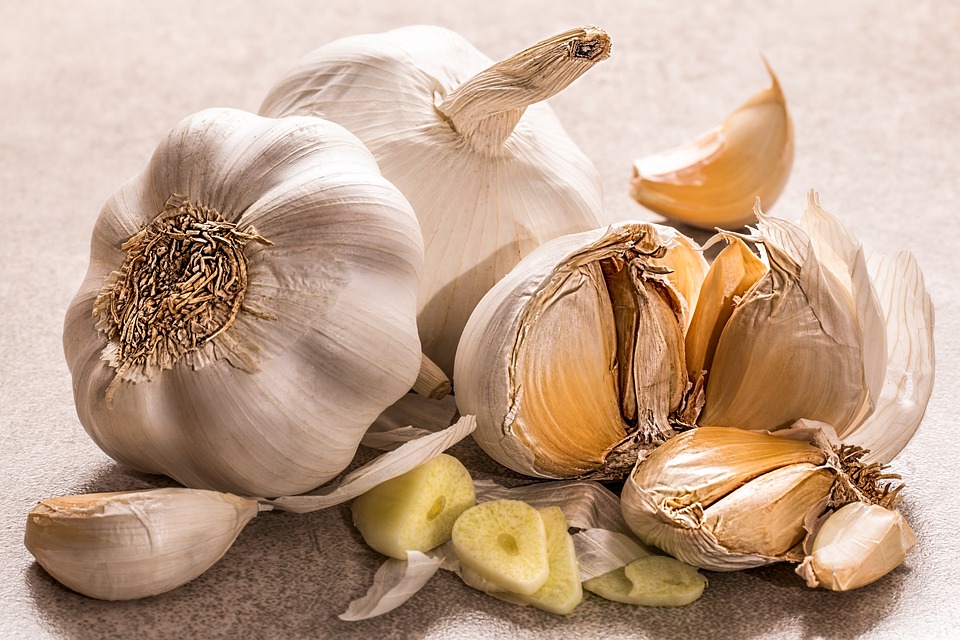1. Garlic
Garlic’s anti-cancer effects
When garlic is finely chopped or crushed it releases a sulphur-containing substance, including allicin, that protects against cancer. It is the allicin that gives garlic its distinctive taste and smell, so the stronger it smells, the more allicin you’re getting.
People who eat garlic regularly have lower risks of cancer, and especially oesophagus, stomach, pancreatic, colon and breast cancer.
Garlic has been shown to reduce inflammation, prevent blood vessel growth to cancer cells, encourage apoptosis (Cancer cell death), and reduce the impact of other carcinogens (cancer-causing substances) in the body.
Garlic juice also completely stops the growth of cancer cells in the laboratory and also has anti-bacterial and anti-viral effects.
How to use garlic
You can eat garlic raw, stir it into already-cooked dishes, or use it in cooking, but the longer or hotter you cook it, the less powerful its effects are. And garlic only produces allicin once it has been chopped or crushed, so if you eat or cook garlic straight away, the enzymes in the garlic don’t have time to generate much of the valuable allicin.
So, it’s best if you let your chopped or crushed garlic sit for around 10-15 minutes, to allow the allicin to reach peak quantities, before eating it or cooking with it.
The World Health Organisation recommends eating a clove of garlic a day, which will give you around 7 to 14 milligrams of allicin in total (from a typical 3g clove). Some sources suggest eating as much as 6 cloves a day (around half a head), which may irritate your digestive system (and annoy your friends!) so eat as much as you can enjoy comfortably.
Be aware…
- Garlic supplements don’t appear to have the same effect as fresh garlic
- Garlic is known to interfere with certain medications, so please check with your health-care provider
My favourite ways to eat garlic
Although I used to eat a clove of raw garlic a day, these days my stomach’s not so keen. When I eat garlic, I usually have it in hummus, almond feta or in a simple tomato and basil pasta sauce.
Similar foods to garlic
2. Onion
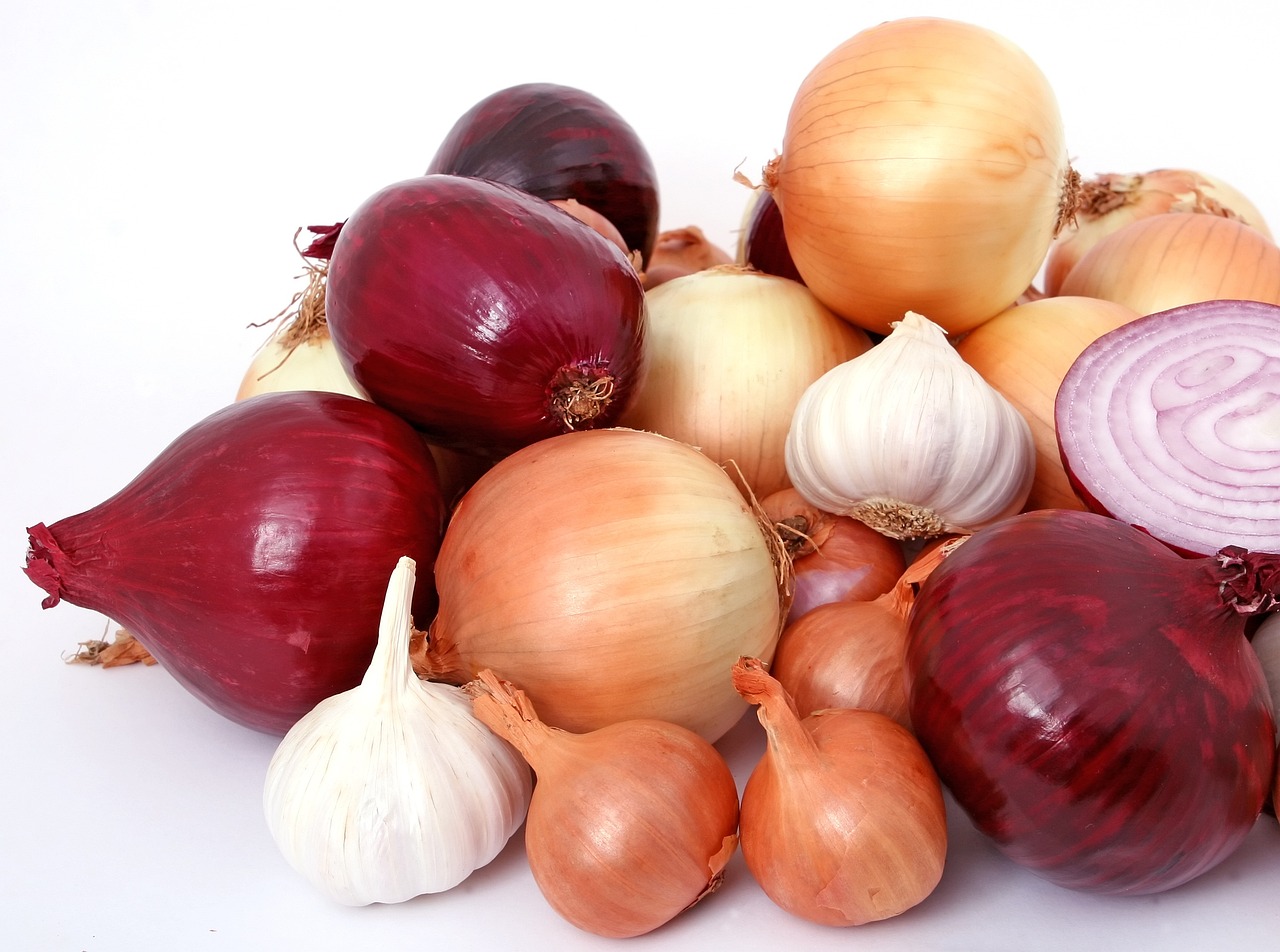
Onion is very closely related to garlic, also releases allicin when crushed or chopped (although not as much). It also contains other beneficial substances, including quercetin and high levels of beneficial polyphenols, and demonstrates many of the same anti-cancer effects as garlic.
As a bonus, onions are also the least likely to contain high levels of pesticides or other potential carcinogens. Eat half a cup per day for maximum benefit, maybe as soup, dip or onion rings.
3. Leeks
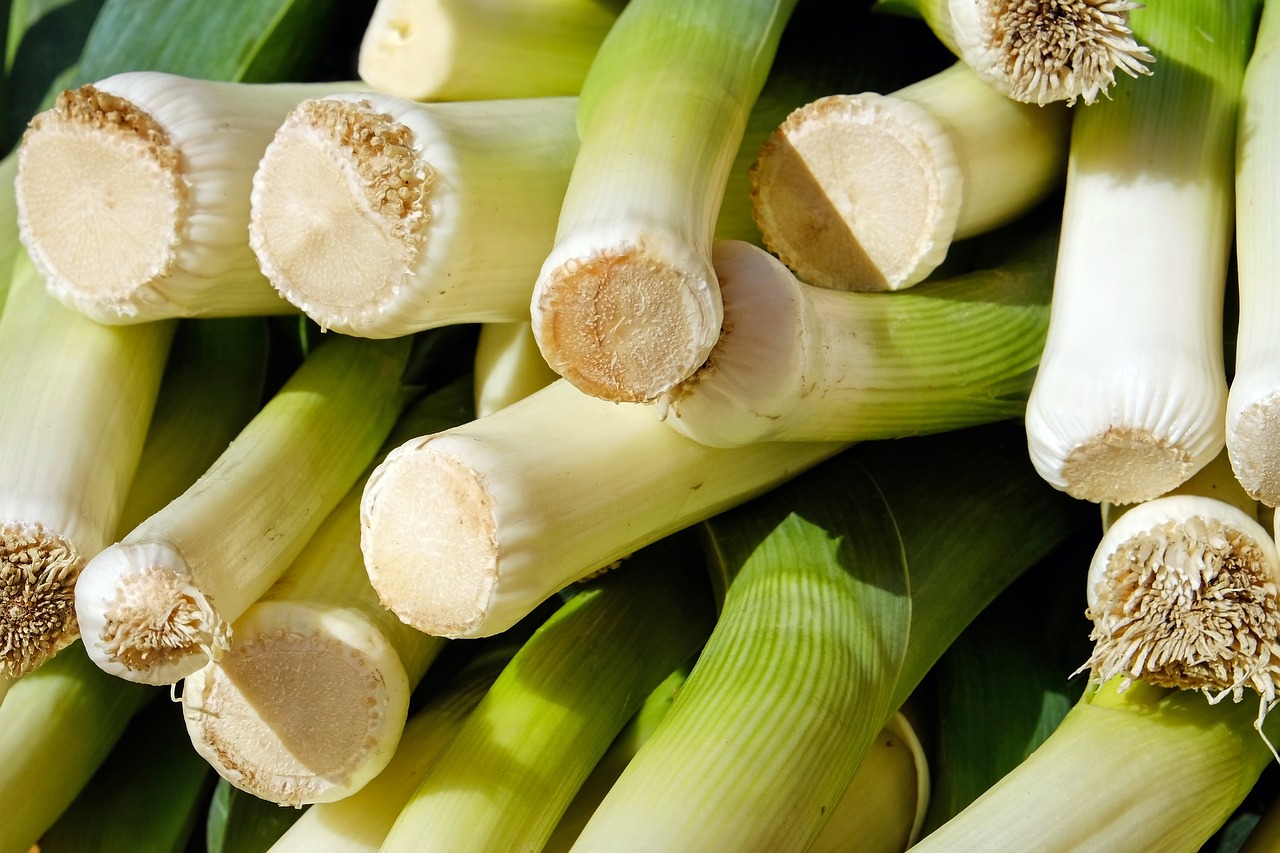
Leeks also belong to the Allium family of vegetables, along with garlic and onions.
Leek juice has been shown to completely stop the growth of cancer cells, just like garlic juice does. Get your dose of leeks soups, casseroles and pasta.
4. Chives, spring onions and scallions
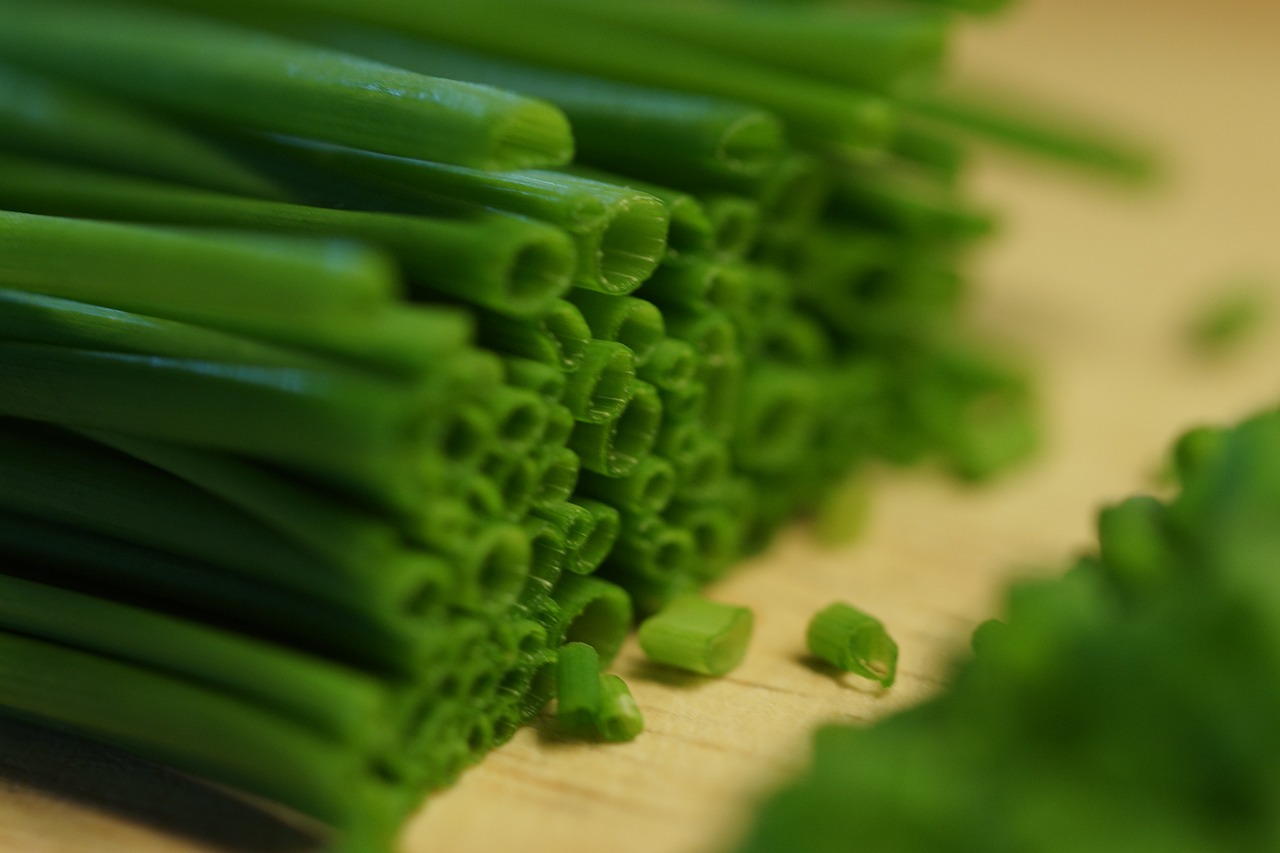
Chives, spring onions and scallions are also part of the garlic and onion family and provide many of the same benefits in preventing and healing cancer.
So, choose whichever members of the Allium family you enjoy most, and eat lots!
5. Broccoli
Broccoli’s anti-cancer effects
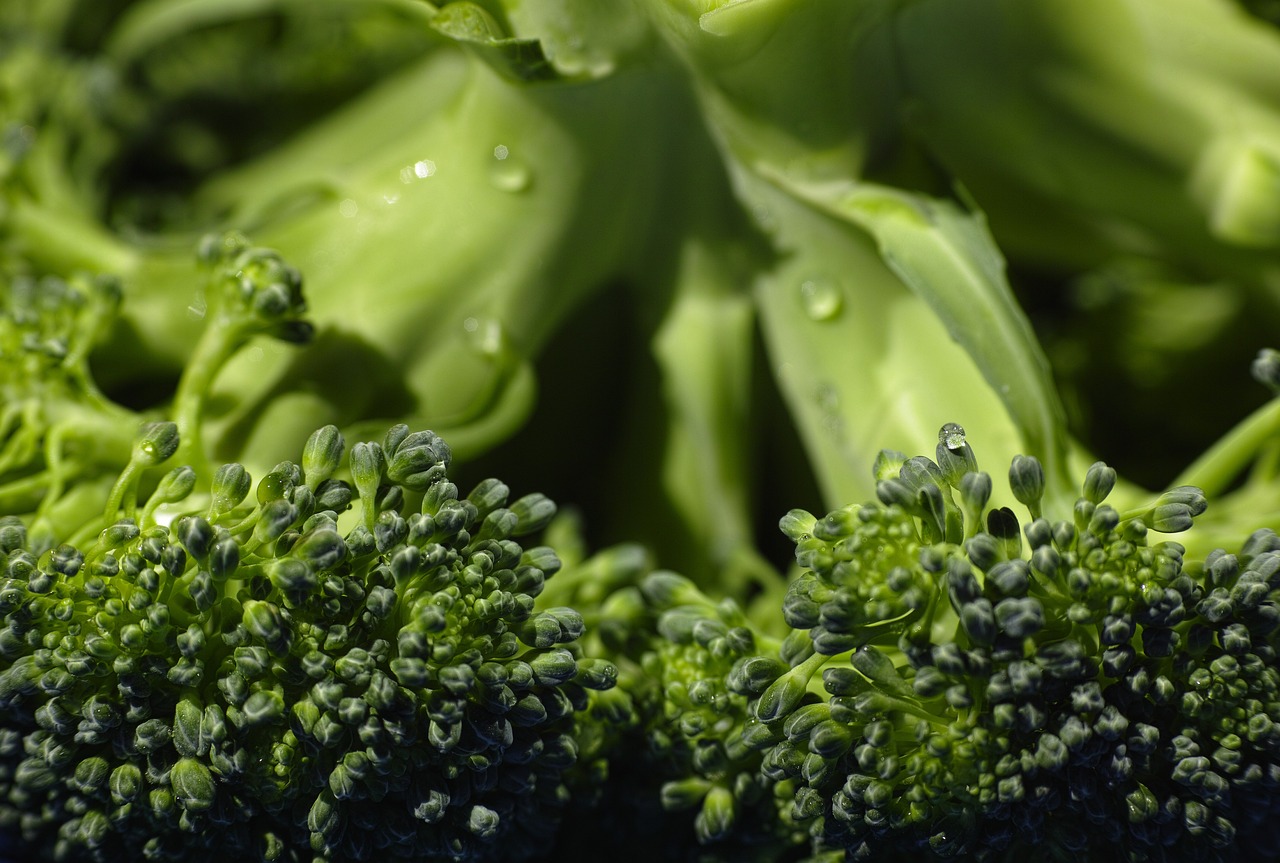
The sulforaphane's in broccoli are powerful anti-cancer compounds. Broccoli contains a substance called sulforaphane, which is responsible for broccoli’s distinctive taste and smell. It’s also responsible for increasing the body’s ability to remove cancer-causing chemicals, and it also targets cancer stem cells – those especially hard to kill cancer cells that keep cancer coming back.
The sulforaphane in broccoli also helps to limit oxidation – the process that ages the body and creates misbehaving cells – and there are also special chemicals called indoles in broccoli that can inhibit the growth of breast cancer cells.
Sulphoraphane has also been found to protect genes from mutations that could lead to cancer, preventing cancer cells from growing and spreading, and may even encourage cancer cells to die (Apoptosis). An extract from young broccoli sprouts has also been used successfully to improve the results from conventional cancer treatments.
How to use broccoli
Broccoli works best when you eat it raw or lightly steamed. You absorb the anti-cancer substances much better that way, and you don’t lose as much of them through cooking, which can destroy up to 90% of the sulforaphane. Just half a cup a day protects against lung, stomach, colon, bladder and rectum cancers, up to 50% reduction in risk.
But you will be glad to know that as little as 10 grams a day can still have a big impact. Young broccoli sprouts contain the highest levels of sulforaphane and might be the most powerful way to eat broccoli. And the more bitter it tastes, the better!
Be aware…
• Broccoli may change how the liver processes medications, so keep this in mind if you’re taking anything that’s changed by the liver.
• Broccoli contains lots of fibre, along with the beneficial sulphuric substances, so it may cause pungent gas, also known as “stinky farts”.
My favourite ways to eat broccoli
When I was growing up, I used to go into my Dad’s veggie garden and eat broccoli florets fresh off the plant, so I learned to love the taste.
These days my favourite ways to eat broccoli are lightly steamed (especially the stalks!) or as crudité (chopped veggies) with dip.
6. Brussel Sprouts
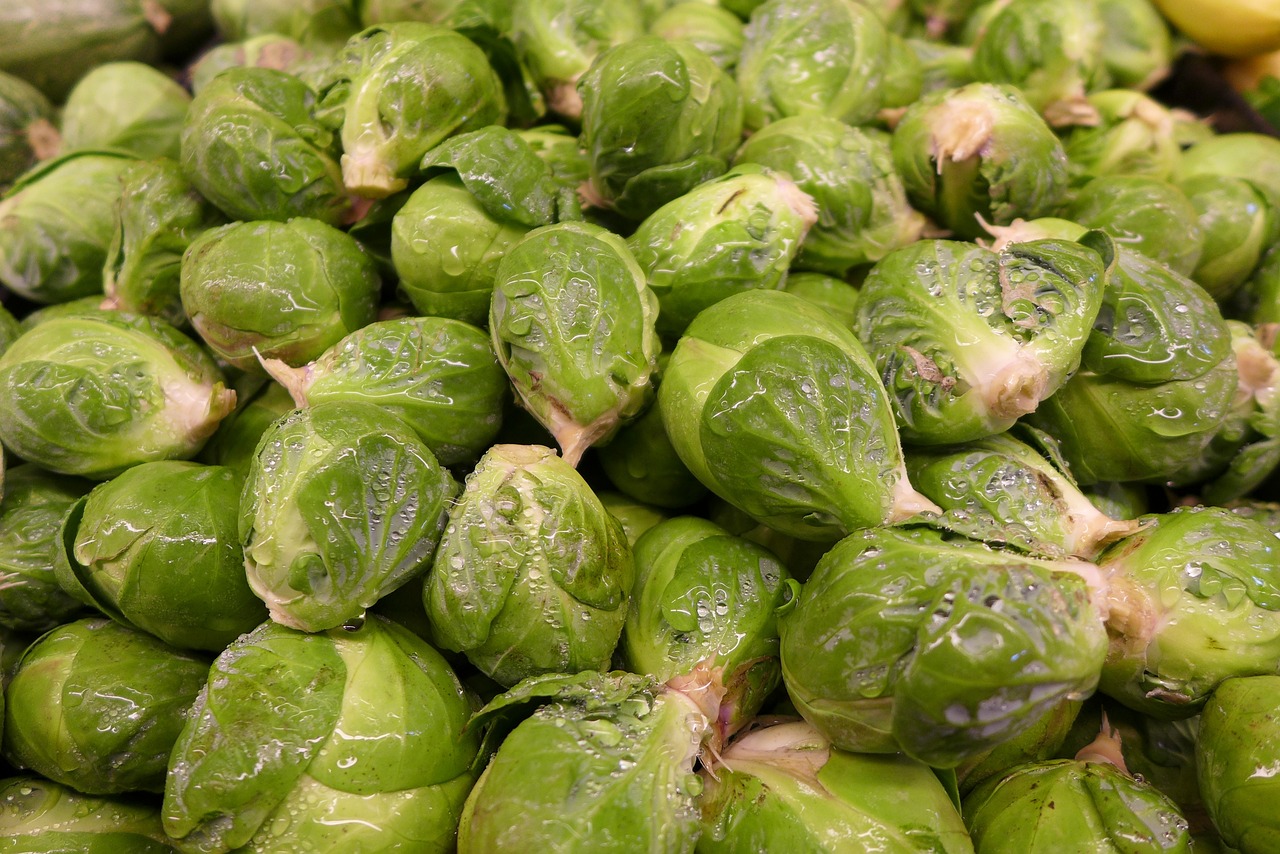
Brussels sprouts contain glycosylates, which your body turns into isothiocyanates, which in turn activate a cancer-fighting enzyme system in your body.
They’ve also been shown to reduce the risk of several cancers, encourage cancer cells to die and decrease the amount of DNA damage in cells.
What’s not to love about that? Chop them finely and add them to salads, soups and stews to get the benefits without the taste.
7. Cabbage
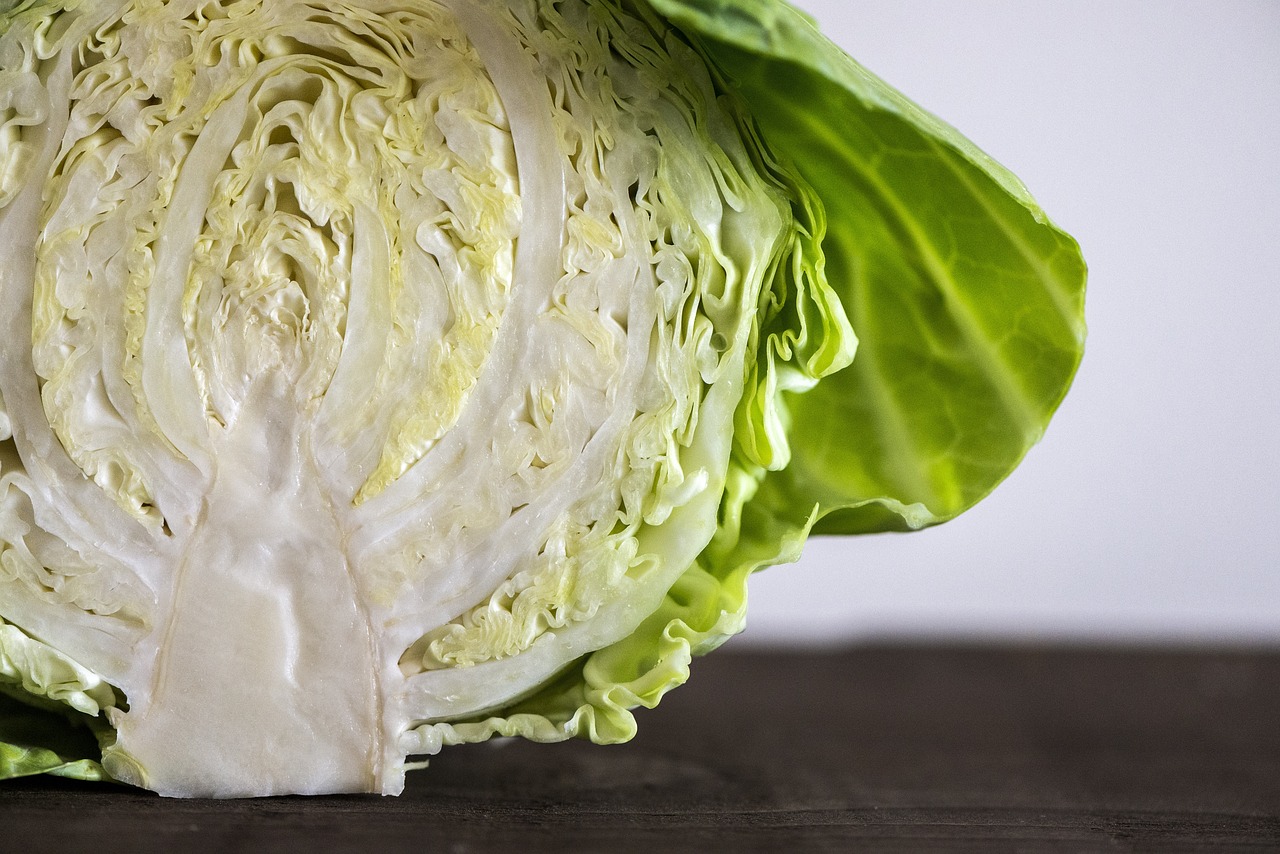
Cabbage is a member of the Brassica family of vegetables, along with broccoli, brussels sprouts and cauliflower. It’s a really good source of sinigrin - It is been shown to be protective against a range of cancers.
Cabbage also appears to switch off genes that can promote cancer. Chow down on cabbage in stews, stuffed, as steaks or as sauerkraut.
8. Cauliflower
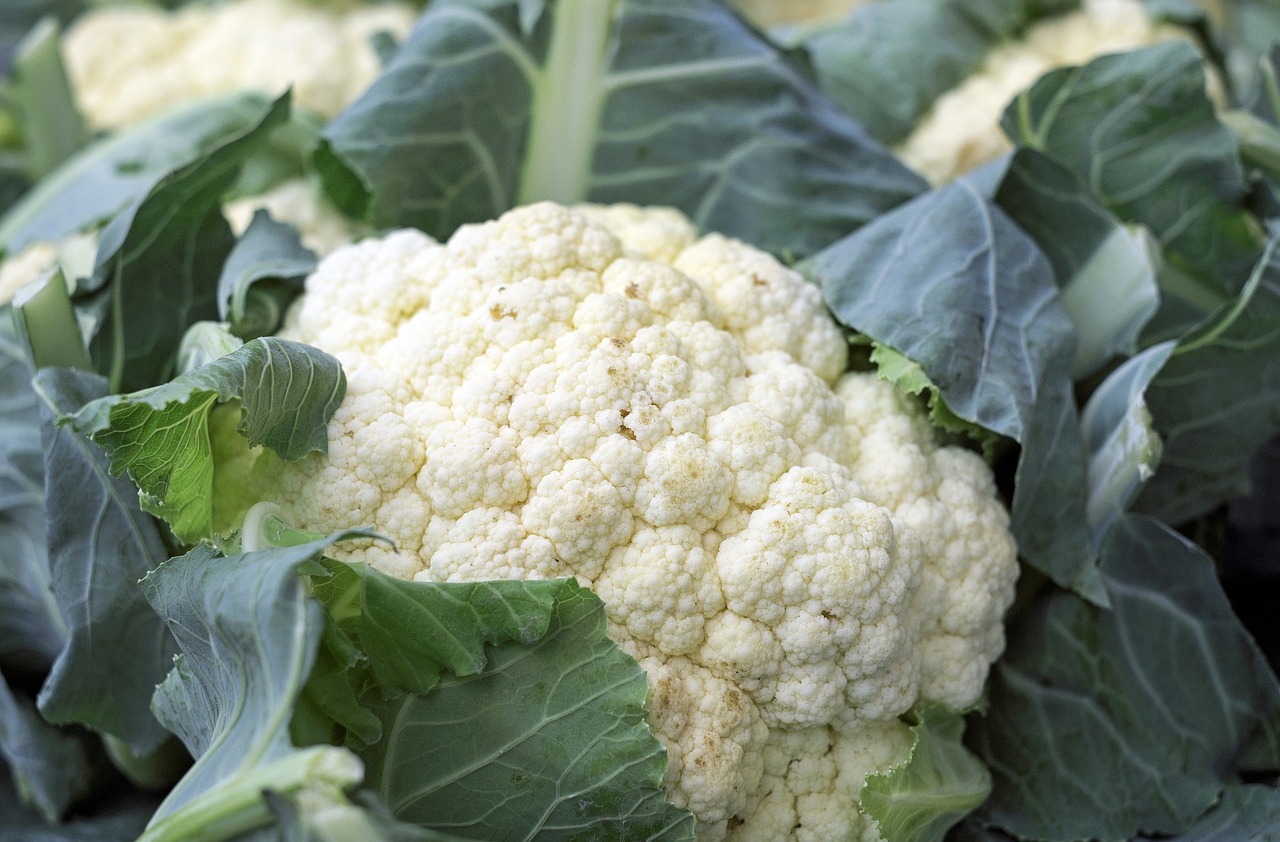
As a milder-tasting member of the Brassica family, Cauliflower is still a powerful anti-cancer food, with a similar effect to broccoli on decreasing the risk of a range of cancers.
It appears that many of cauliflower’s anti-cancer benefits are retained after cooking, although raw is always better where possible. Enjoy it in soups, fried rice and as a snack.
9. Kale
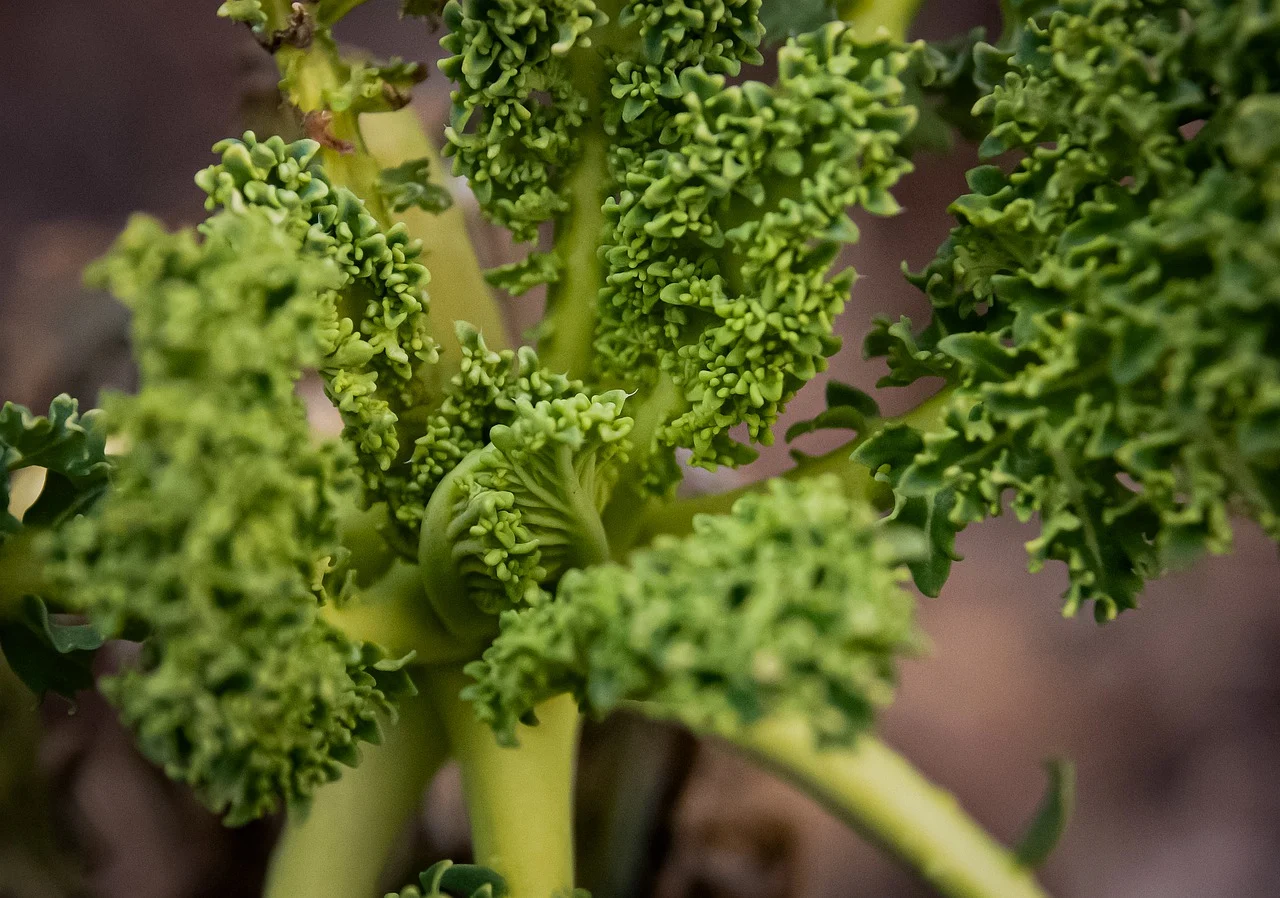
As yet another member of the Brassica family, kale is a well-known health-promoting leafy green vegetable. It’s packed to the rafters with anti-oxidants, anti-inflammatories and anti-cancer nutrients.
Like the other cruciferous members of the Brassica family, kale helps the body defend against cancer, and is one of the most nutrient-dense foods around. Great ways to eat kale are in salads, soups and smoothies.
10. Spinach
Spinach is a powerhouse of anti-cancer nutrients
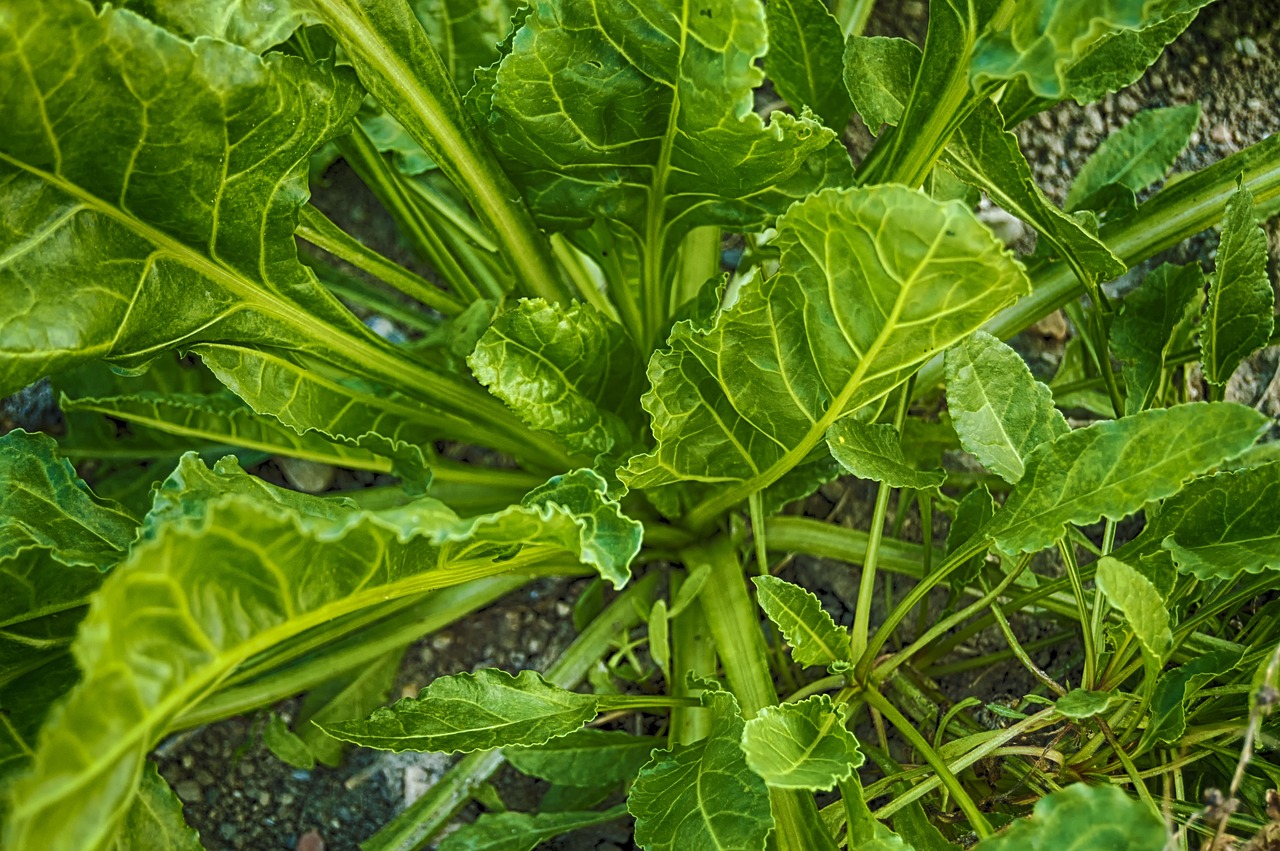
Spinach is rich in nutrients, but low in calories, making it a great addition to your anti-cancer diet. Packed with fibre, folate and a wide range of carotenoids such as lutein and zeaxanthin, along with saponins and flavonoids, spinach is a powerhouse of health-promoting substances.
There have been several studies that have shown that the more spinach you eat, the lower the risk of a large number of cancers. Carotenoids in spinach protect you against cancers of the mouth, pharynx and larynx, by removing dangerous free radicals that can damage your cells and cause them to become cancerous.
Spinach has also been shown to inhibit the growth of certain types of breast cancer cells, skin cancer cells, lung cancer, stomach cancer and the glycoglycerolipids in spinach seem to inhibit angiogenesis (blood vessel growth) as well. By adding the spinach to your diet may also make conventional treatments more effective.
How to use spinach
Spinach is best eaten fresh or lightly cooked. As with many of the phytochemicals from plants cooking at high temperatures or long periods can render them mostly ineffective, so go easy on your spinach.
You can add it raw to salads, sandwiches, wraps and smoothies, or add a handful to soups, stews, stir-fries and curries just before serving.
Be aware…
• Spinach contains oxalic acid, which can interfere with the absorption of minerals when eaten in large quantities. Lightly steaming or boiling spinach may reduce this effect, and may also make its other nutrients more available.
• Spinach may also interfere with diabetes medications and blood-thinning medications, so speak with your health-care professional if you’re unsure.
My favourite ways to eat spinach
I love the fact that spinach is one of the sweetest leafy green vegetables, so it’s pretty easy to eat no matter what form it’s in.
11. Rocket
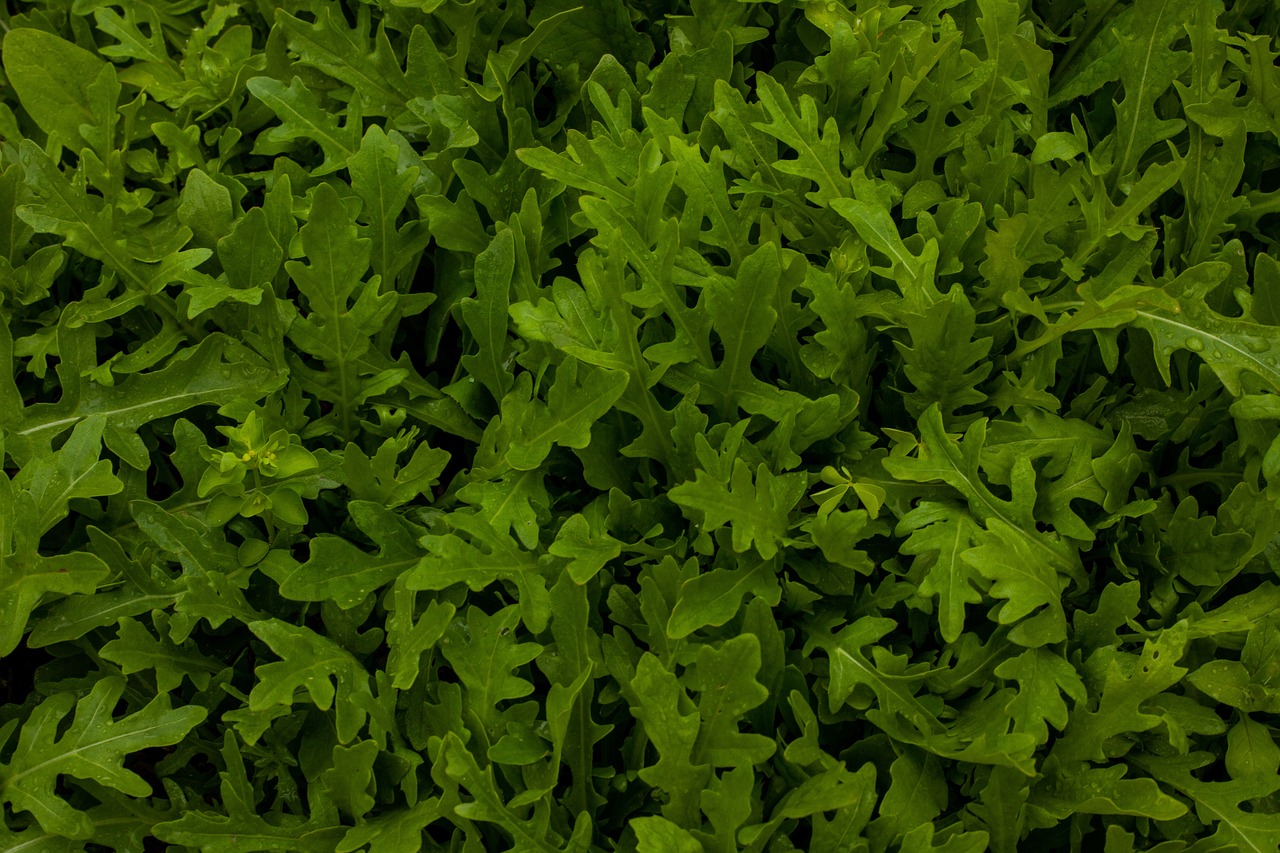
Rocket (also known as roquette or arugula) is another nutrient-packed leafy green, which is just like spinach. It’s also a member of the Brassica family along with kale, mustard greens, watercress and chard.
Rocket also contains isothiocyanates which have anti-inflammatory and anti-cancer effects in the body. Enjoy rocket in salads, pesto, soups and smoothies.
12. Raspberries
Raspberries are a fantastic source of ellagic acid which stops cancer in multiple ways
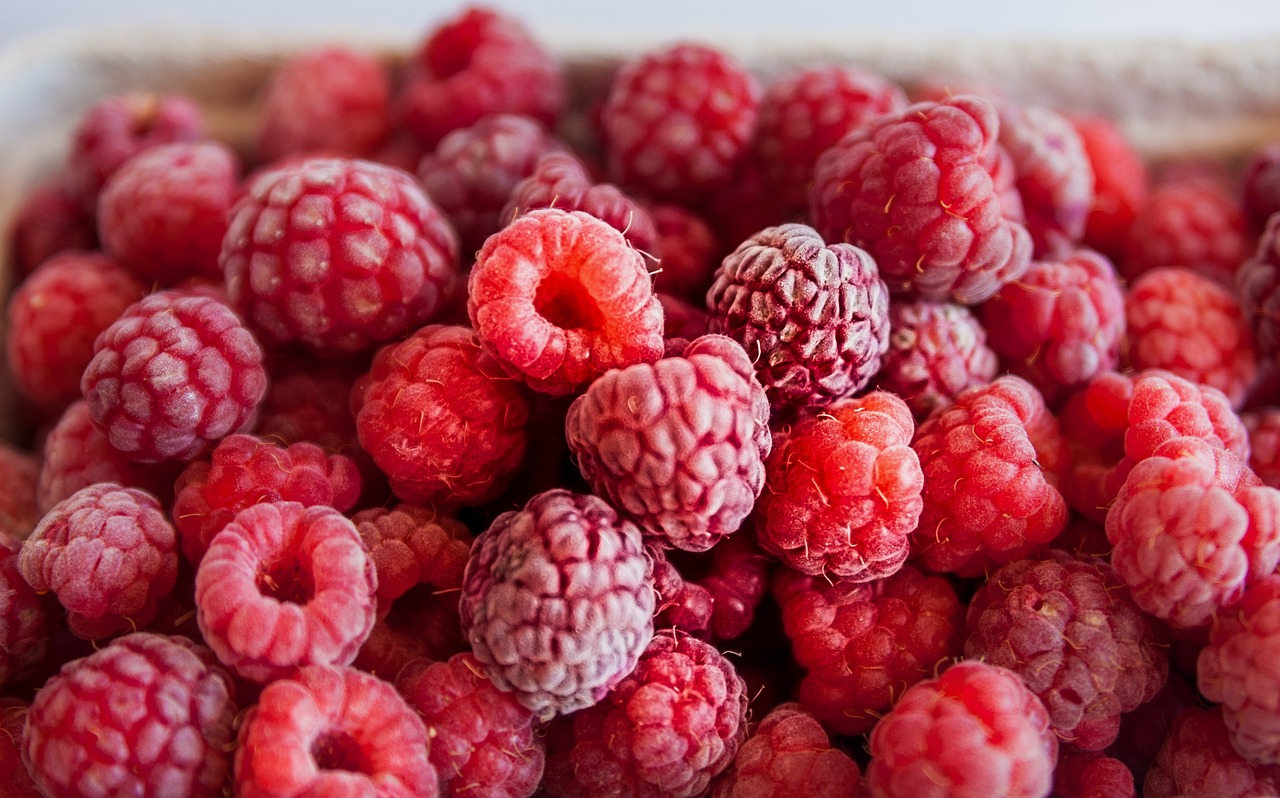
Raspberries contain substances called ellagitannins, which are broken down into ellagic acid in the digestive tract.
Ellagic acid has been shown to have an amazing number of health effects in the human body, including inhibiting cancer cell growth, encouraging cancer cell death, increasing the body’s ability to remove carcinogens, disrupting inflammation, preventing blood vessel growth and reducing the spread of cancer through the body.
Studies using red raspberry puree showed strong anti-cancer effects, by slowing the growth of cancer cells and triggering cancer cell death, in cervical cancer, breast cancer, pancreatic cancer, oesophageal cancer, oral cancer, skin cancer, prostate cancer and leukaemia.
Ellagitannins also prevent cells from mutating and forming cancerous cells and bind with cancer-causing agents in food, smoke and pollutants. Interestingly, rats with breast cancer were fed a diet of black raspberries or blueberries for six months, and their tumour volume decreased by 70% and 60% respectively, suggesting that raspberries may even be able to reverse cancer.
How to use raspberries
The most potent effects of raspberries were seen using whole fresh raspberries, the raspberry puree, frozen berries or a freeze-dried powder. Berries made into jam did not work as well, possibly due to the high levels of heat, so try to get your berries as fresh and as unprocessed as possible.
Canned, unsweetened berries might also be an option for those months where fresh berries are hard to come by. You can gently wash raspberries with water if they seem especially dirty, and gently pat them dry, right before you plan to use them.
Be aware…
• Although ellagic acid supplements are available, the human body has trouble absorbing it and sometimes can have some side effects. It’s also not as effective as the complete range of phytochemicals available in whole raspberries.
• Red raspberry might act like oestrogen, so if you have a hormone-sensitive condition, please check with your health-care professional.
• Raspberries (and other berries) are sometimes heavily treated with pesticides, so get organic ones if you can.
My favourite ways to eat raspberries
I still fondly remember a few summers back when we picked almost 4 kilograms of raspberries from a local organic farm and I had to eat raspberries for breakfast, lunch and dinner before they went rotten. These days my favourite ways to eat them are by the handful, in fruit salad, as berry sauce on desserts, and in smoothies.
Note: Sugar creates the ideal conditions for cancer to thrive - you should minimise the amount of added sugar in your diet when you’re trying to heal cancer.
Similar foods to raspberries
13. Blueberries
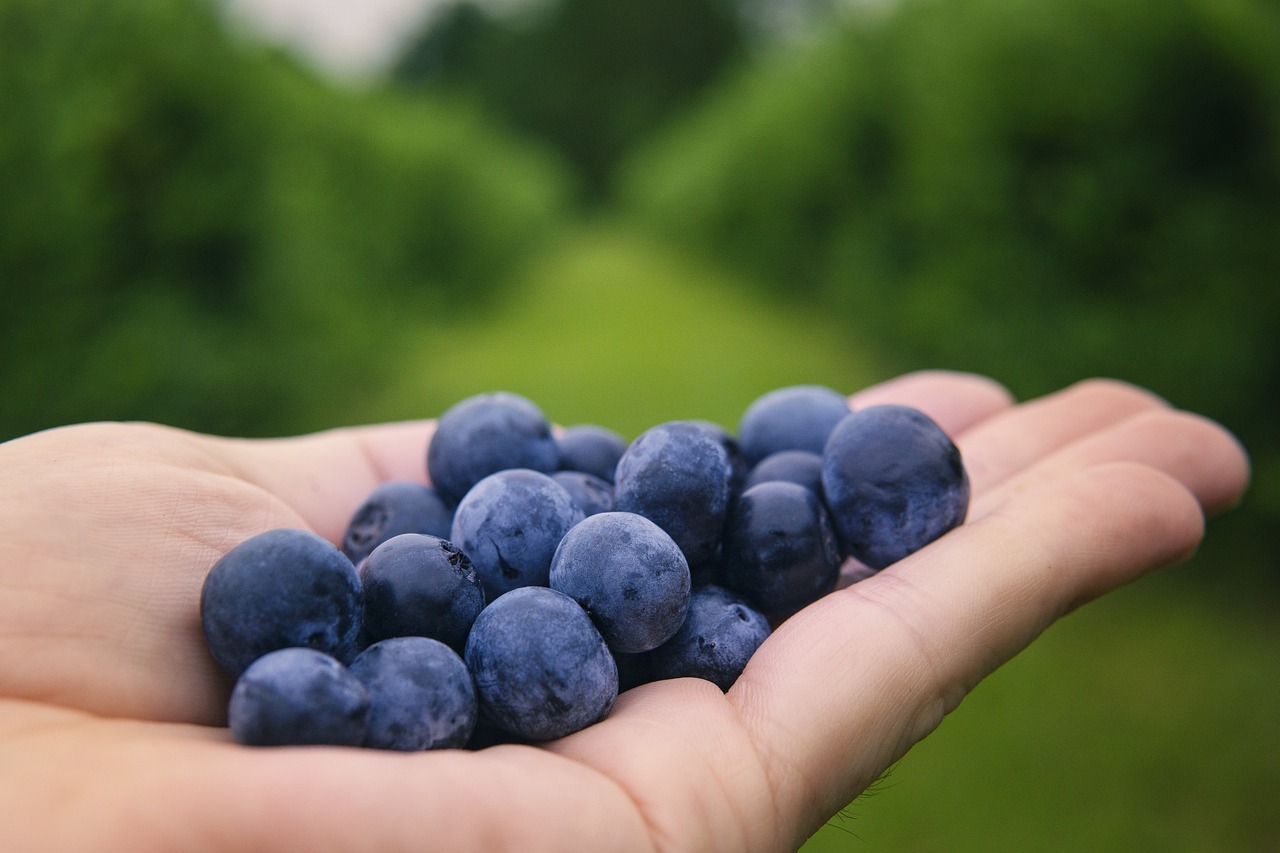
Blueberries are brimming with antioxidants and flavonoids that help prevent cell damage, including the same ellagitannins as raspberries. Their dark colour is due to another class of plant chemicals called anthocyanins that help to protect cells.
Blueberries have been shown to reduce inflammation, prevent cancer cell growth and increase cancer cell death. Eat them fresh, frozen, or in a fruit smoothie.
14. Cherries
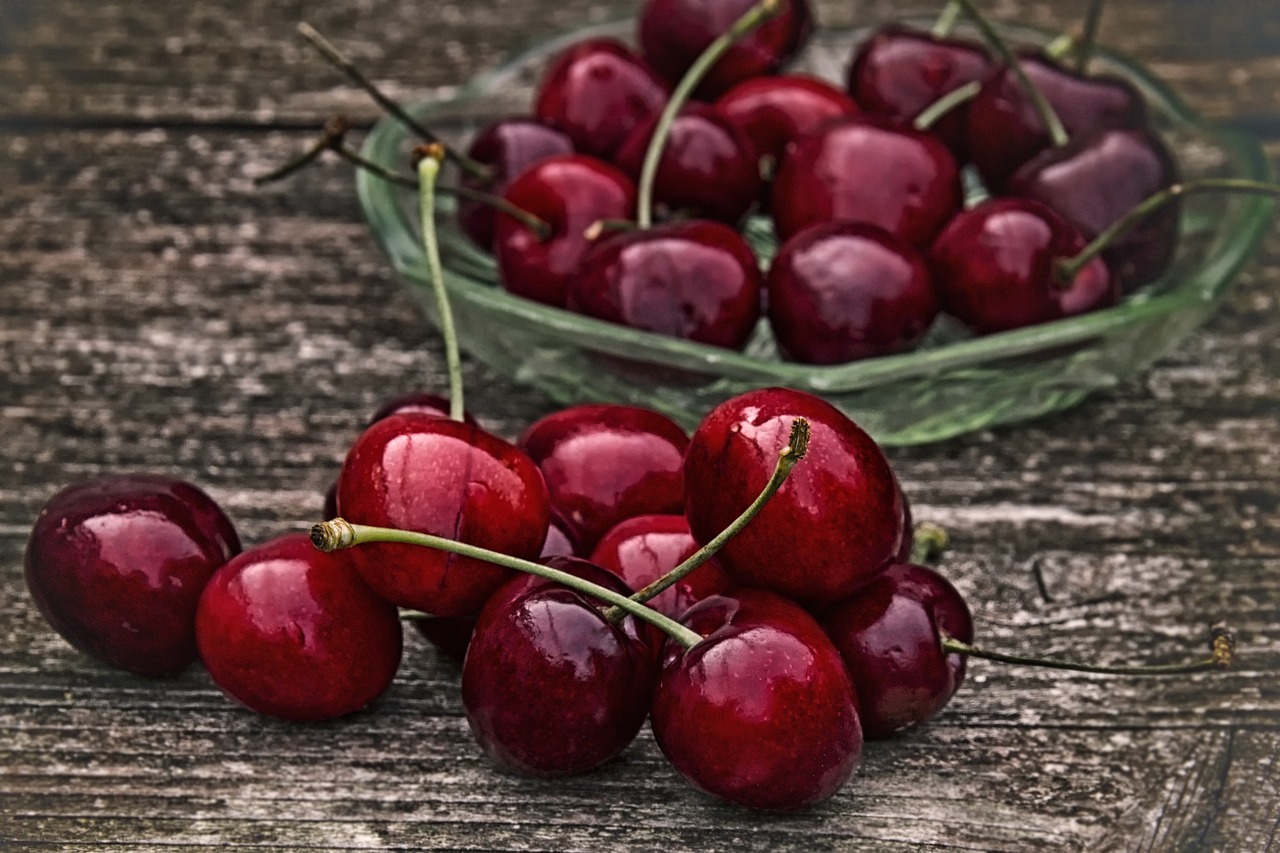
Cherries are also high in anthocyanins, giving them their lovely dark red colour.
Anthocyanins have been shown to stop cancer cells from growing and encourage them to die, without affecting healthy cells.
Cherries also contain perillyl alcohol, which is also good for you, or stopping cancer cells to grow, encouraging apoptosis and preventing blood vessel growth.
Enjoy cherries fresh, or in cherry pie, cherry ripe bites or cherry ice cream.
15. Blueberries, Strawberries, boysenberries, cranberries
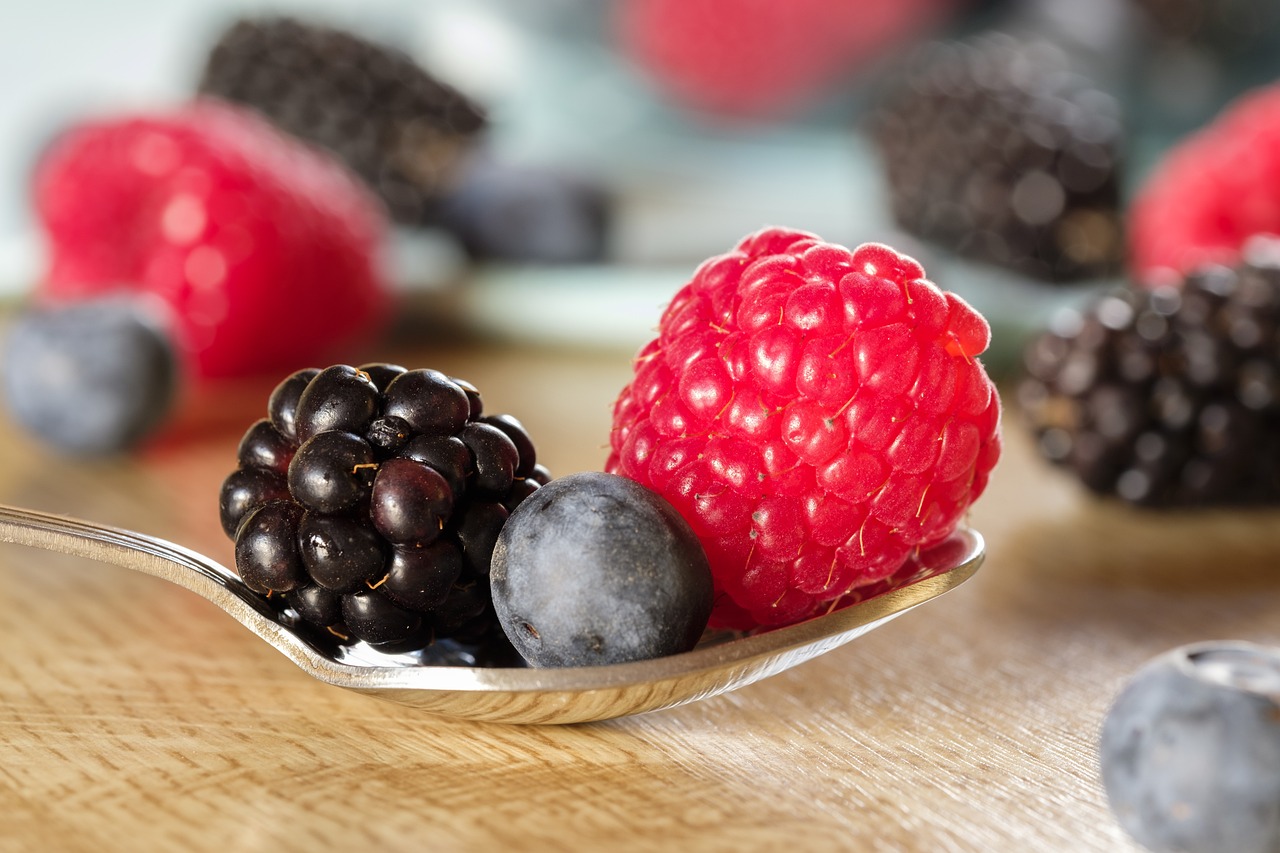
The dark blue-purple-red colour of all berries is a sure sign that they contain plenty of health-promoting flavonoids, especially anthocyanins.
So, choose whichever berries you enjoy the most, and eat lots of them!
16. Beetroot
Beetroot’s anti-cancer effects
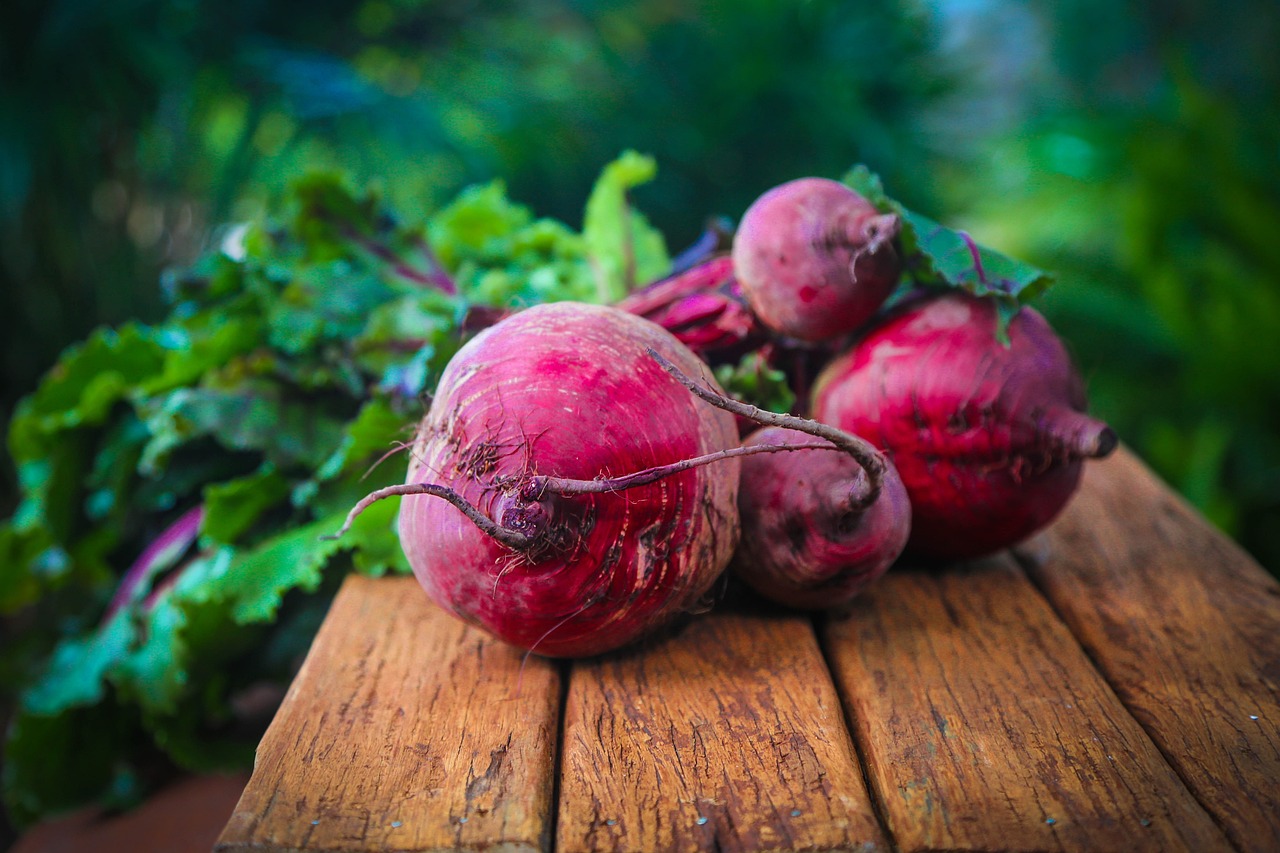
The betacyanin in beetroot helps stop cancer cell growth, kills cancer cells and detoxifies the body.
Like the berries above, beetroot is full of anthocyanins (betacyanin in particular), which give it its amazing deep red colour. Also known as beets or red beets, beetroot also contains high levels of iron, which help deliver more cancer-killing oxygen to cancer cells.
They also help to detoxify the liver, kidneys and lymph, reducing the toxins in the body that may cause cells to become cancerous. The pigments from beetroot have been shown to decrease cancer cell growth and kill cancer cells, especially in prostate cancer and breast cancer.
How to use beetroot
Many studies of the effect of beetroot on cancer have used either “beetroot extract” or as beetroot juice, and this is a good way to enjoy beetroot as well.
Beetroot juice has a slightly earthy taste, which you can offset a little by adding carrot, celery or a small amount of apple to your juicer. You can also boil, steam or bake the whole beetroot, or you can serve them raw, as slices or shredded in a salad.
If your beetroots come with the green tops, save them and use them as you would chard.
Be aware…
• Drinking beetroot juice may turn your urine red for 6-48 hours afterwards (called beeturia) so don’t be alarmed if this happens to you.
• Beetroot is high in oxalates, which can cause gout or kidney stones when eaten in large quantities.
My favourite ways to eat beetroot
Growing up, I knew beetroot as those vinegary-tasting purple slices from a can. I still liked it though, especially on bread with mayonnaise.
Thankfully, I discovered that there are other ways to eat beetroot, and I now generally enjoy it steamed or as juice.
17. Tomatoes
Tomato’s anti-cancer effects
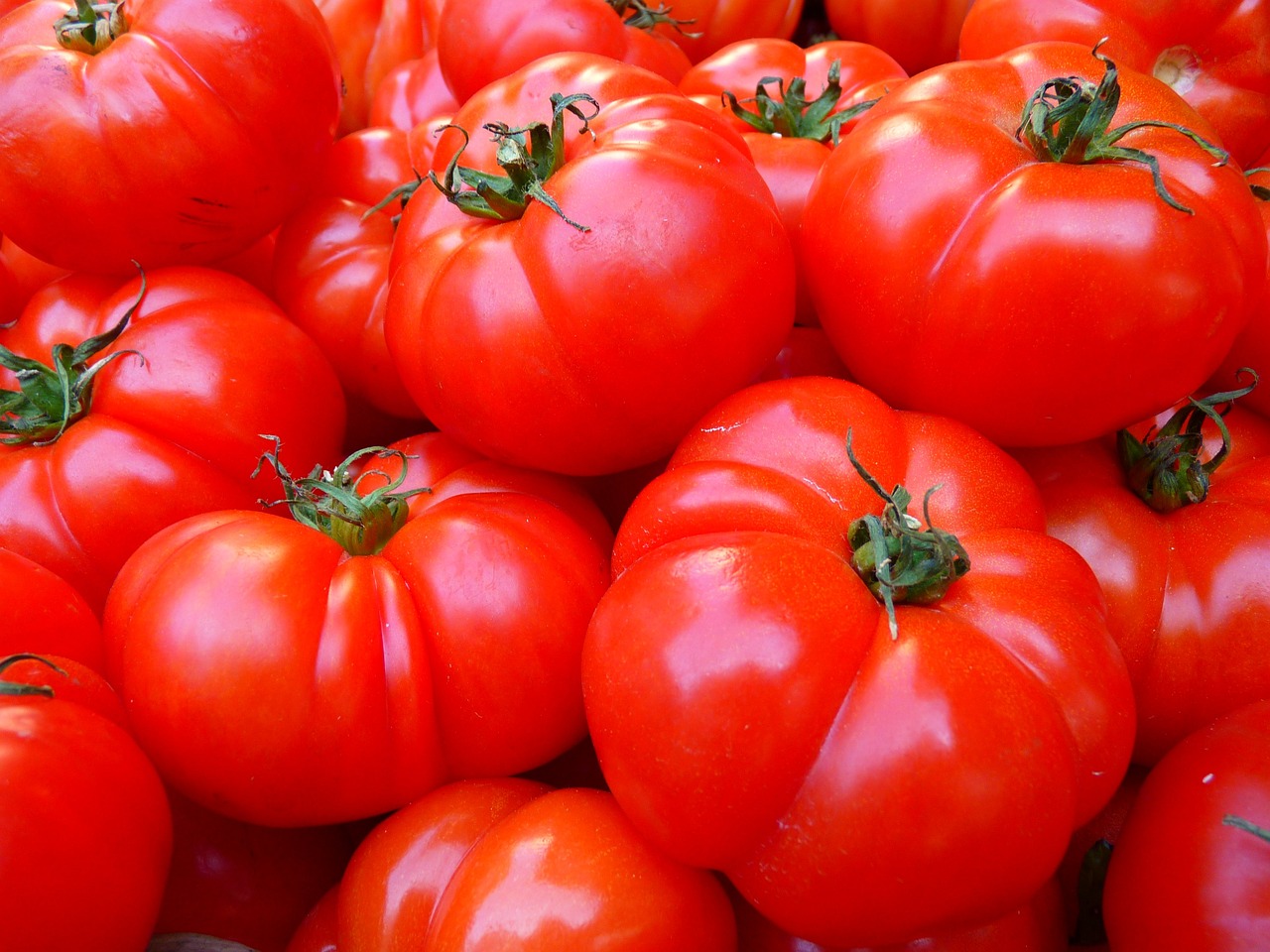
The lycopene in tomatoes stops cancer cell growth, kills cancer cells and lowers the risk of several cancers.
Tomatoes are well known for containing lycopene, a powerful antioxidant, along with beta-carotene (the orange colour in carrots). Eating tomatoes has been shown to protect men from developing prostate cancer, and lycopene is also able to kill cancer cells.
Higher dietary levels of tomatoes have also been linked to lower levels of lung, breast, prostate, cervical, pancreatic and colorectal cancers. Lycopene works against cancer by slowing the growth of cancer cells, and protecting against cancer-causing substances, and may also protect against side-effects of conventional cancer treatments.
How to use tomatoes
The lycopene in tomatoes is more bioavailable when the tomatoes are cooked, so unlike many of the other fruits and vegetables in this list, you’re better off giving these beauties some heat first.
So using canned tomatoes might be the simplest way to use tomatoes in your cooking (make sure your cans are BPA free). If using them fresh, keep in mind that the redder the tomato, the more lycopene it contains, so make sure to give your tomatoes time to ripen up fully for maximum benefit.
Tomatoes are very versatile in the kitchen, so try roasting them, grilling them, stuffing them, making pasta sauces, salads, salsas, soups and simply eating them whole or sliced.
Be aware…
• Tomatoes are quite an acidic food, so they can aggravate heartburn (and mouth ulcers).
• Canned tomatoes may contain high levels of salt, so look for low-salt versions.
My favourite ways to eat tomatoes
Tomatoes are one of my favourite vegetables to grow, so each summer we’re inundated with fresh tomatoes from the garden.
I love to eat whole, fresh cherry tomatoes as snacks, in homemade tomato sauce and as tomato soup. We also use our tomato harvest to make arrabbiata.
18. Carrots
Carrots’ anti-cancer effects
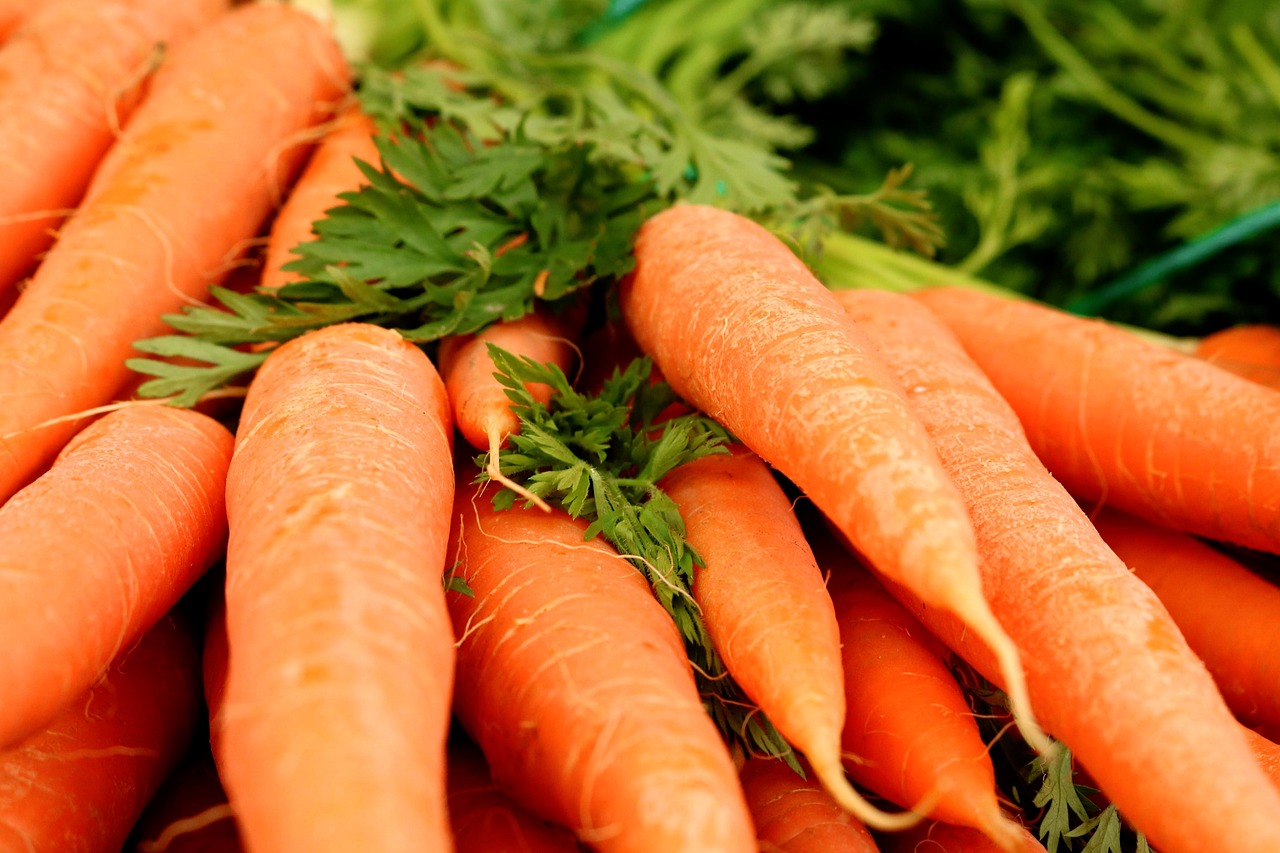
Carrots are packed with beta-carotene and falcarinol, both of which work against cancer.
No discussion of anti-cancer foods would be complete without the inclusion of carrots.
Many people claim to have cured their cancer using just carrot juice and there are even books written about it. Carrots contain beta-carotene, which gives them a wonderful orange colour, and falcarinol, which has been shown to inhibit the growth of cancer cells.
Beta-carotene strengthens the immune system, helps with detoxification, improves liver, health and works against cancers of the skin, eyes, stomach, breast, prostate and blood (leukaemia). The fibre in carrots also helps to regulate blood sugar levels, which helps to reduce cancer growth, and ensure that unhelpful toxins are moved more quickly out of the body.
How to use carrots
How to get the most benefit out of your carrots, eat them raw or lightly steamed. If you do cook them, leave them whole and chop them afterwards, to retain as much of the beneficial substances as possible.
Carrots are great chopped into sticks for eating with dip, grated into salads (like coleslaw), or made into raw veggie noodles. They also tend to work well in soups and stews but keep them chunky if you can.
Be aware…
• If you eat a LOT of carrots (10 or more a day for at least a couple of weeks), you might find that your skin starts to yellow (called carotenoids’).
• This effect is not harmful and can happen with any yellow-coloured fruit or vegetable, and will go away once you stop eating carrots.
• Carrots may lower blood sugar levels, so if you have diabetes, keep an eye on this.
• Beta-carotene supplements don’t work the same as eating whole carrots and may be harmful to some kinds of cancer.
My favourite ways to eat carrots
Growing up I hated carrots, and we often used carrots from the deep freeze, so perhaps that’s why I’ve never held carrot in very high regard.
But I still do enjoy my carrots mostly as carrot sticks with hummus cut into carrot noodles and added to a salad or as ribbons on top of a bowl of vegan pasta.
Similar foods to carrots
19. Orange Sweet Potatoes
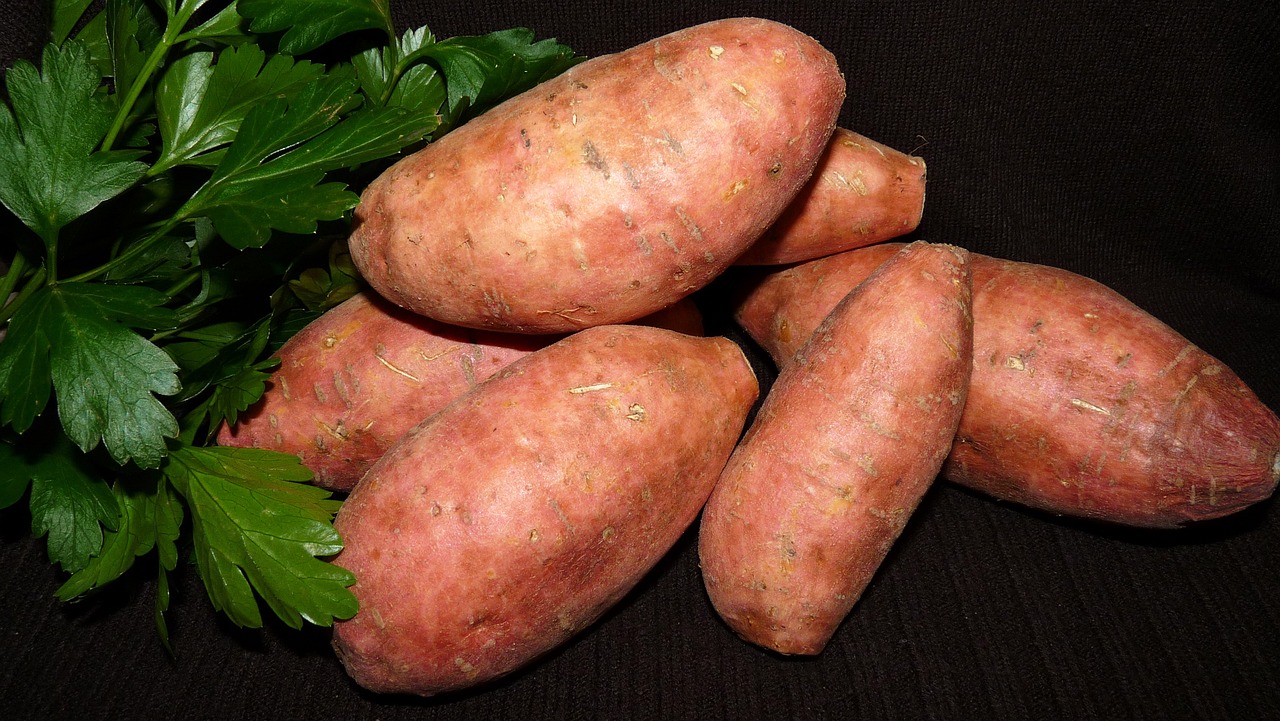
Orange sweet potatoes are packed with beta-carotene, just like carrots, and a variety of anti-oxidants, while purple sweet potatoes have lots of anthocyanins.
They also contain a unique protein, which stops cancer cell growth, and they’re also really good at keeping blood sugar levels stable, which makes it harder for cancer to thrive.
The best way to cook sweet potatoes is to leave the skin on and steam or bake them, and to have them with a little healthy fat (like coconut or olive oil) to improve absorption of the nutrients. You can eat sweet potatoes roasted into wedges, baked, in a mash, stuffed, in soups, chilis, salads or as chips.
20. Celery
Celery’s anti-cancer effects
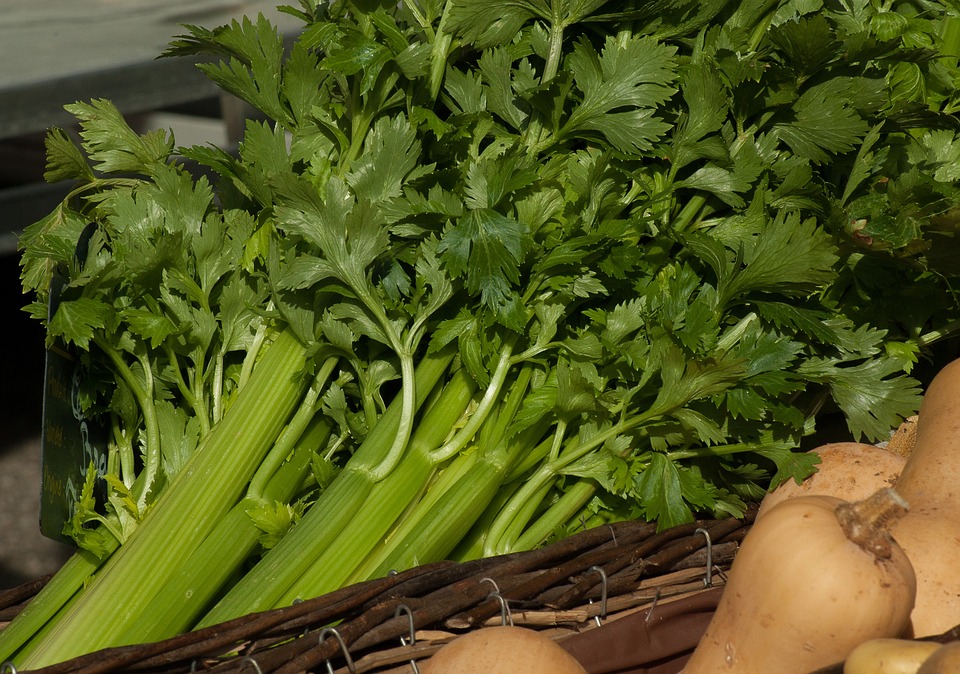
The flavonoids in celery are very effective against many cancers.
Celery contains specific plant substances called apigenin and luteolin, which are flavonoids that help to prevent and heal cancer.
Apigenin encourages cancer cells to die and is also a powerful anti-inflammatory substance, as well as an antioxidant.
Luteolin interferes with the metabolic pathways needed for cancer cells to grow and has been shown to reduce the size of cancers.
Both apigenin and luteolin have shown effectiveness against a number of cancers, including skin cancer, breast cancer, cervical cancer and lung cancer.
How to use celery
Celery, like many anti-cancer foods, is best eaten raw or lightly cooked. It’s great with a huge range of dips, stuffed with your favourite spread, or added to salsa and tacos.
Add celery to your soups and stews for extra nutrition, or throw some into your next stir-fry. You can also dice it finely and add it to a salad, or braise it gently in stock or tomato juice until its tender.
Be aware…
• Celery may contain high levels of pesticides, it’s best to get organic if you can.
• Celery can also lower blood pressure, which might be useful to many people, but not if you already have low blood pressure.
• Celery may also interfere with certain medications, so check with your health-care professional before eating it in large amounts.
My favourite ways to eat celery
I’ve always loved celery. As a kid, my favourite way to eat it was filled with dip, although these days not much has changed.
I use it for dipping into hummus, my favourite part is the “celery heart” – the pale, sweet stalks in the middle. For the last few months, I’ve been having fresh celery juice 4 or 5 times a week.
21. Asparagus
Asparagus’s anti-cancer effects
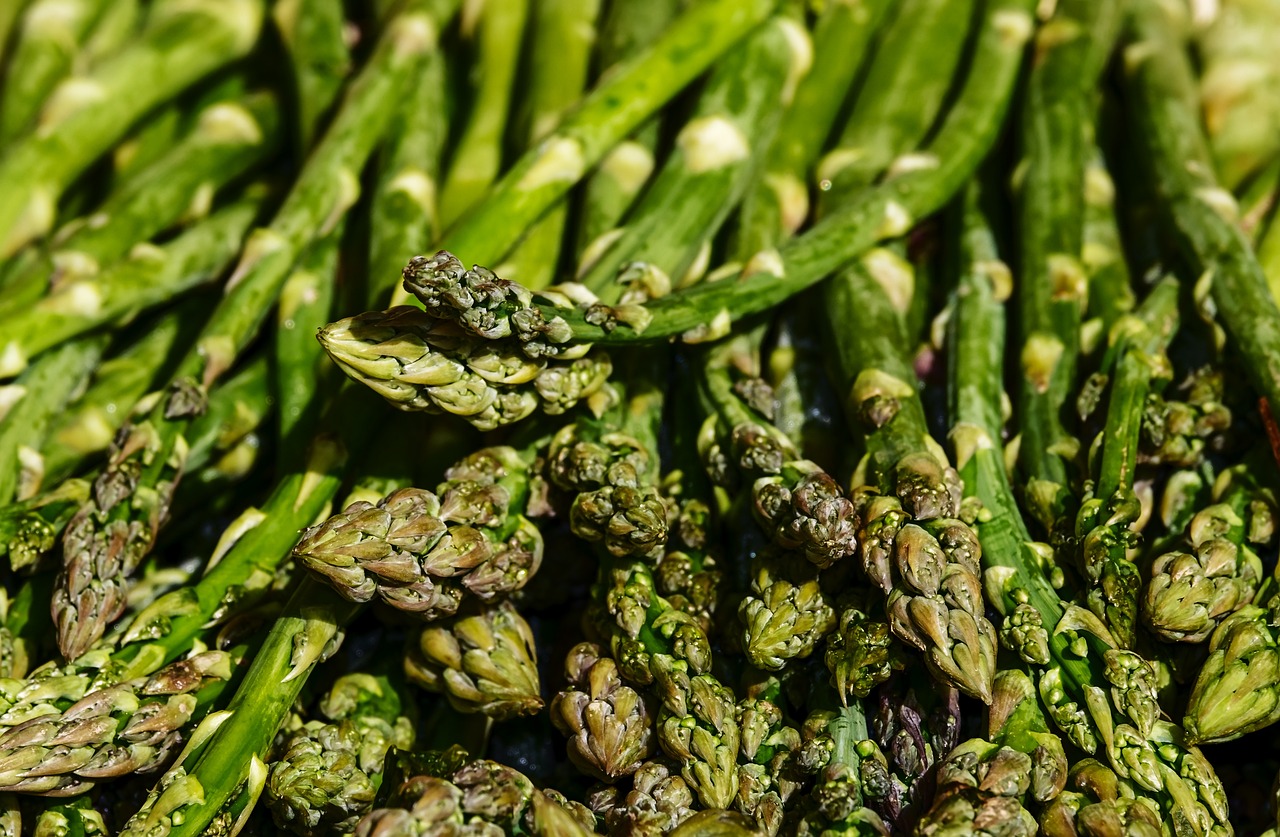
The glutathione in asparagus detoxifies the body and boosts the immune system.
Asparagus has one of the highest known concentrations of a substance called glutathione, which is referred to as a “master antioxidant“. Glutathione is great at detoxifying the body, boosting the immune system and protecting cells against damage. Asparagus also helps to reduce inflammation, which is known to promote the development of cancer.
Asparagus also contains polysaccharides (specialised plant sugars) that have anti-cancer properties, including preventing cancer growth, killing cancer cells and stopping blood vessel growth. Extracts from various parts of the asparagus plant, including leaves and stems have been shown to have similar anti-cancer effects.
How to use asparagus
Asparagus can be safely eaten raw and is a great vegetable for pairing with your favourite dip. You can also roast, steam, simmer or grill asparagus stems, but only until the stems become bright green and just tender.
Be aware…
• Some people do have allergies to asparagus especially if they also allergic to onions and garlic.
• Eating asparagus can make your urine smell because it contains asparagusic acid and that is broken down into sulphur-containing substances that create a distinctive “rotten egg” smell.
22. Apples
Apples’ anti-cancer effects
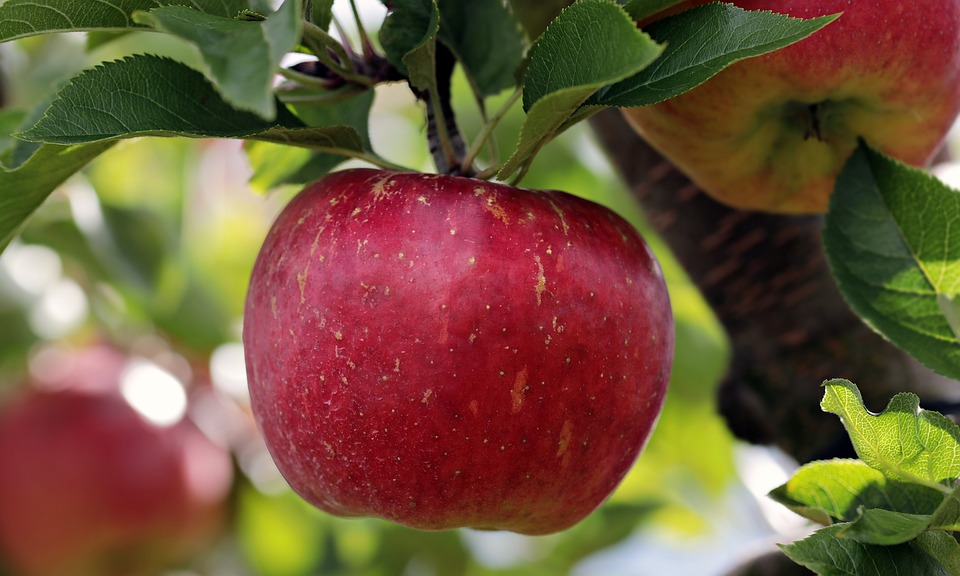
An apple a day can significantly reduce the risk of many types of cancer.
Eating an apple a day doesn’t just keep the doctor away. It can also reduce the risk of some cancers by up to 50%. Eating apples regularly reduces the risk of cancers of the stomach, oesophagus, lung and breast.
Apples are high in antioxidants and contain other anti-cancer substances that including quercetin, which has over 30 known functions in the body (including anti-cancer effects), plus anthocyanins and procyanidins.
How to use apples
Of course, the simplest way to eat apples is fresh and whole, and they’re perfectly designed as a snack food. Lots of the healthy substances in apples are found in the skin, leave the skin on.
And red apples contain even more of the protective plant chemicals than green ones – they’re what give apples their amazing colours – so go for the red ones. You don’t have to eat an apple every day, of course, but they should be part of your regular servings of fresh fruit.
Be aware…
• Apple seeds contain small amounts of cyanide, so some people say you should avoid eating them, and others say that they can help cure cancer.
• Apples tend to be favoured by worms and other insects, so they’re often heavily sprayed with pesticides. Go organic if you can.
My favourite ways to eat apples
I don’t eat a lot of apples myself, but my partner eats one almost every day. He got into the habit when he was trying to reduce his cholesterol naturally, it seems to have stuck. When I do eat apples, I prefer to slice them up and pair them with some Medjool dates and vegan cheese.
They’re also pretty good in raw gluten-free apple to crumble. And did you know, you can make instant, raw, wholefood applesauce just by blending up apples in a high-speed blender? So simple and so delicious!
23. Mushrooms
Mushrooms’ anti-cancer effects
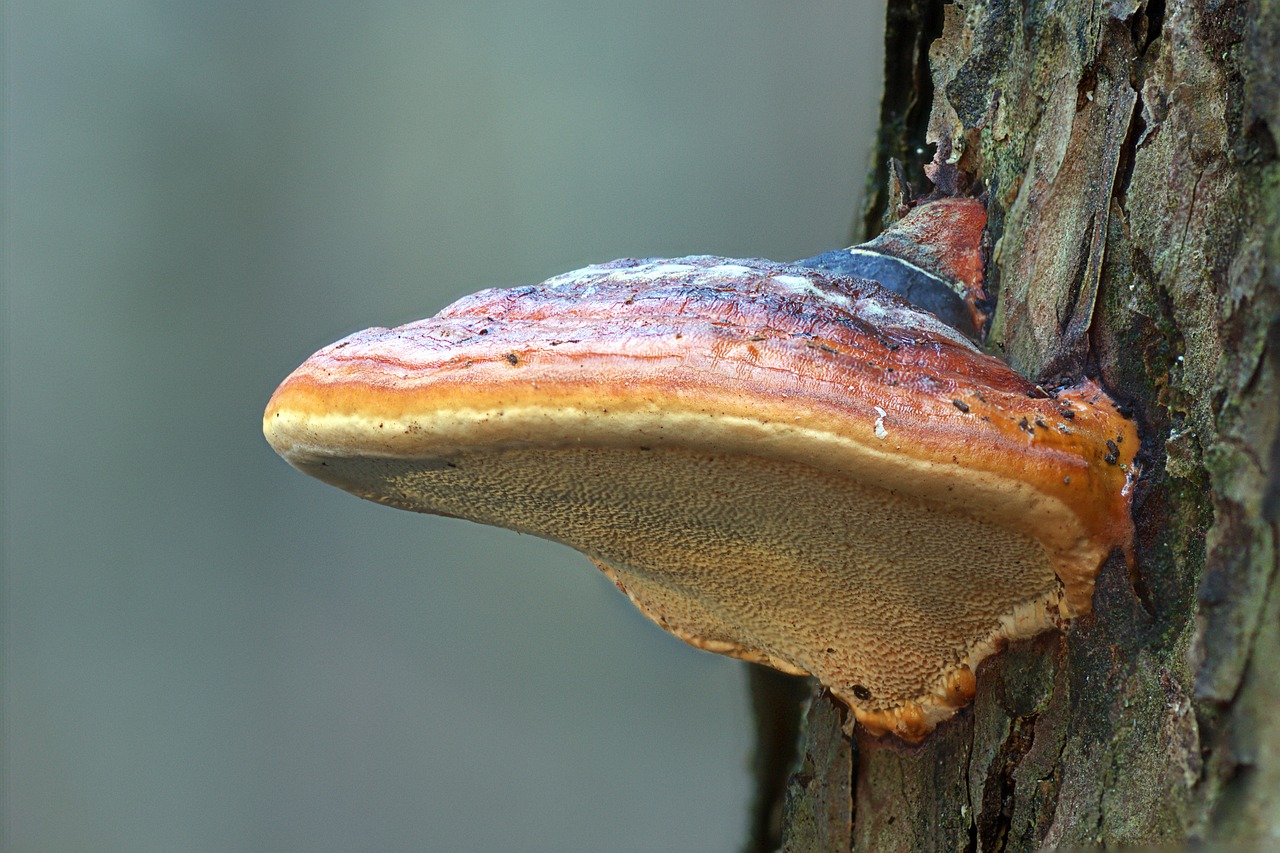
Mushrooms can shrink cancers and boost the immune system.
Mushrooms can powerfully boost the immune system and defend against cancer, especially the “medicinal” mushroom varieties like reishi, shiitake, cordyceps and maitake. They contain beta-glucans, which have anti-cancer properties – they kill cancer cells and stimulate the immune system to attack cancer cells.
Mushroom extracts can also shrink cancers, reduce blood supply to cancer cells, reduce the side effects of conventional cancer treatments and extend survival times. Even regular button mushrooms have been shown to reduce breast cancer rates by 67% for women eating just 10 grams a day.
How to use mushrooms
Mushrooms can be eaten raw, either whole or chopped and added to salads or a sandwich. You may want to brush off any visible dirt first with a damp paper towel, although a small amount of dirt is fine.
Mushrooms can also be roasted, stir-fried, braised or grilled, and as with most of these anti-cancer foods, the less you heat them, the better.
Be aware…
• Mushrooms may interfere with some blood medications, so please check with your health care professional if you have any concerns.
• Mushrooms can stimulate the immune system quite strongly, they may aggravate auto-immune conditions, like multiple sclerosis, lupus and rheumatoid arthritis.
24. Brazil Nuts
Brazil nuts’ anti-cancer effects
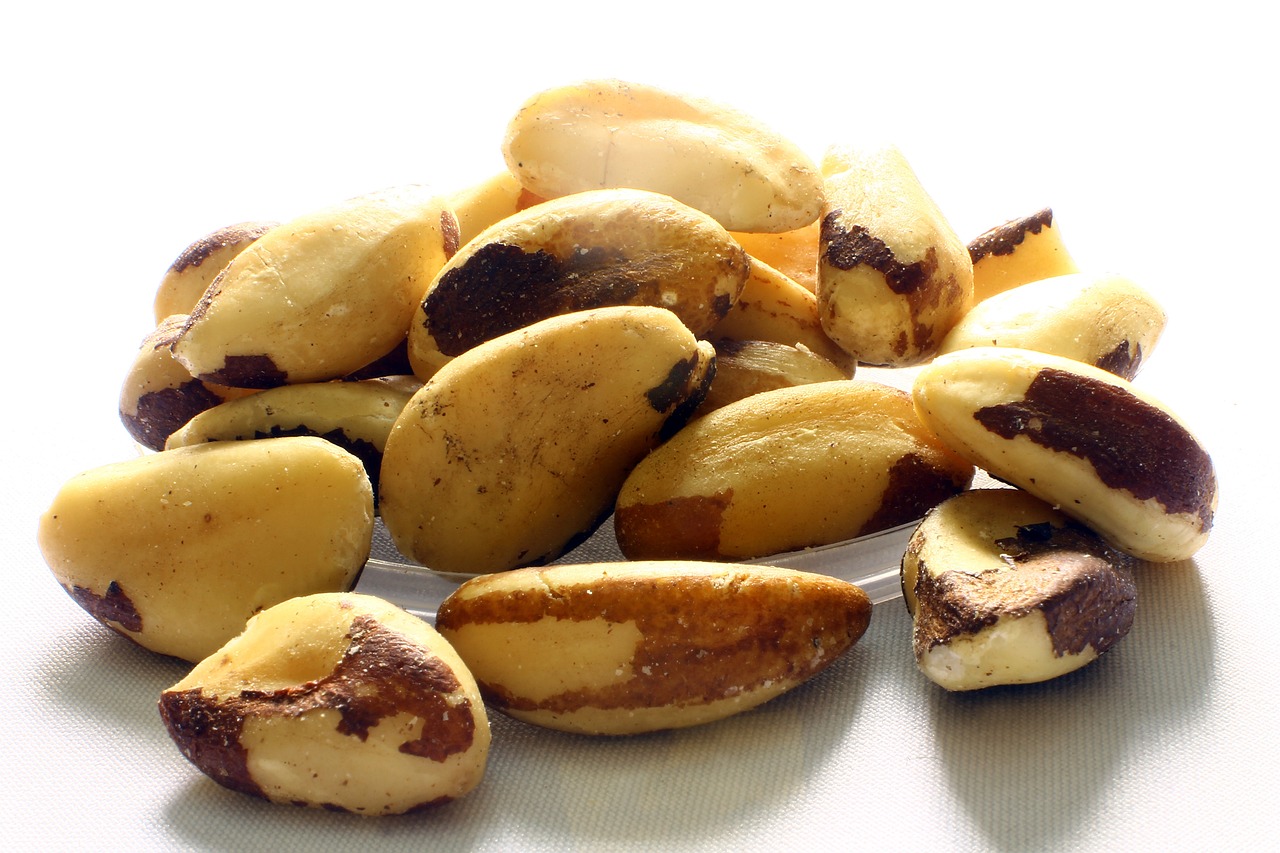
The selenium in Brazil nuts reduces the risk of cancer and increases survival rates.
Brazil nuts are one of the richest sources of the mineral selenium, which has been shown to reduce the risk of several cancers especially prostate cancer.
Higher levels of selenium have also been associated with lower levels of breast cancer, colorectal cancer, lung cancer and also fewer overall deaths from cancer.
Selenium has its effects in two ways - firstly it’s an important part of an enzyme called glutathione peroxidase, which has powerful antioxidant properties, and secondly, it acts to boost the immune system and prevent blood vessel growth to cancer cells.
Brazil nuts also contain ellagic acid, like raspberries, and show anti-inflammatory and anti-oxidant effects as well.
How to use Brazil nuts
The simplest way to get your dose of Brazil nuts is in their whole, original form, either shelled or blanched. You can also add them to salads, smoothies, desserts and breakfast cereal, or make them into nut milk, nut desserts and nut cheeses.
And you only need to eat a couple of Brazil nuts a day to get all of the amazing benefits they can provide.
Just make sure to store them in a cool, dry place or the fridge and don’t let them sit around for too long, or the oils in them can go rancid.
And cooking them can damage all of those healthy oils and phytochemicals, so skip the roasted variety.
Be aware…
• The oils in Brazil nuts can turn rancid quite easily, so make sure when you do buy them that they’re firm, buttery and smell nice.
• You can overdose on selenium, with 10-15 nuts providing a dose that’s considered “too high”. So, don’t go overboard with the Brazil nuts.
• You also can get selenium from the following: mushrooms, mustard seeds, tofu, asparagus, brown rice, sunflower seeds, flaxseeds and spinach.
My favourite ways to eat Brazil nuts
Growing up, I hated the taste of Brazil nuts. Looking back, it was probably because they were rancid and we didn’t even realise it.
These days I love to snack on a bowl of mix nuts, including a couple of Brazil nuts, and I also like chopping them and adding them to my homemade muesli.
25. Flaxseeds
Flaxseeds Flax’s anti-cancer effects
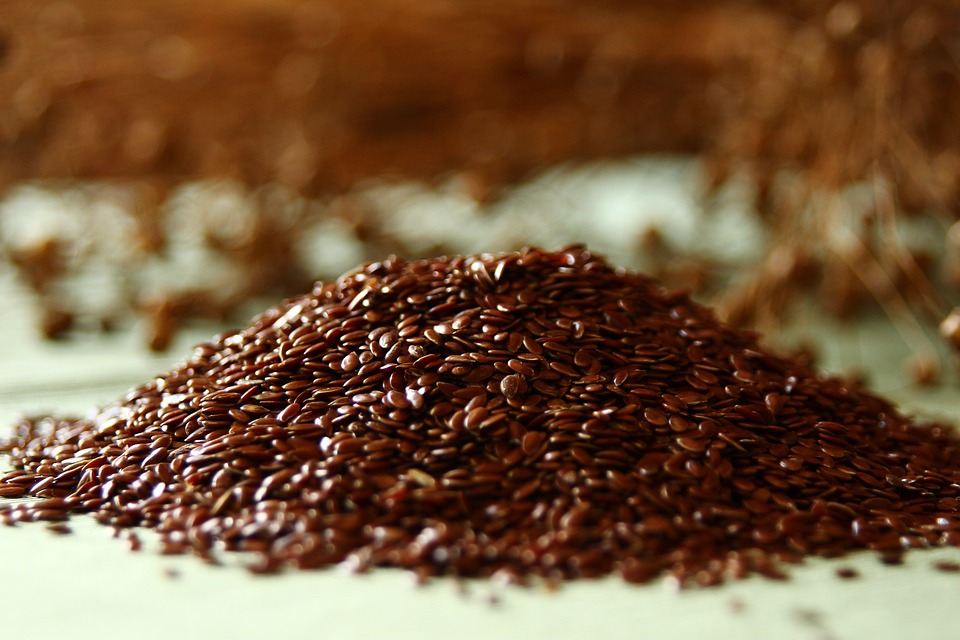
Flaxseed is one of the best sources of omega-3 fatty acids and fibre.
Flaxseed is the best plant-based source of omega-3 fatty acids, which have been shown to stop cancer cell growth, boost the immune system and improve the results of conventional cancer treatments.
It also has incredibly high levels of fibre – both soluble and insoluble – plus selenium and lignan, which has been shown to interfere with the effects of oestrogen and thus help with oestrogen-sensitive cancers.
Regular intake of flaxseeds has been found to reduce the risk of breast cancer, decrease cancer growth and improve survival rates.
How to use flaxseeds
Flaxseeds ideally need to be ground to get access to all the fantastic nutrients inside – either with a spice grinder or your teeth – otherwise much of it will pass through your digestive system whole.
You can sprinkle your breakfast with flaxseeds, add them to your smoothies or use flaxseed oil to dress your salad.
They are also a staple ingredient in many raw and vegan recipes, because they’re so great at binding ingredients together, and you can also add them to your baked goods.
Be aware…
• The oil in flaxseeds goes rancid quickly, in fact, some people say it goes off in just 15 minutes after you grind the seeds, so always do them fresh and store your seeds in the fridge.
• Whole flaxseeds may cause digestive irritation for some people, so grind your seeds if you’re finding this to be a problem.
• Because flaxseed contains so much fibre, it can cause gas, and also acts as a laxative, so be sure to drink lots of water with it.
My favourite ways to eat flaxseeds
I only discovered flaxseeds (also called linseeds) a few years back when I started making raw vegan dishes.
It’s indispensable in my kitchen now because it’s such a great way to bind together raw and vegan recipes, like crackers, bread, and even desserts.
I also love them because they’re so high in omega-3 fatty acids, so I use them to make sure we’re all getting enough of these critical fats in our diets, by adding them to smoothies, burgers and anywhere else I can sneak them in
Top 25 Anti-Cancer Foods List
Here’s a quick recap of the top 25 anti-cancer foods to add to your diet:
1. Garlic
2. Onion
3. Leeks
4. Chives, spring onions and scallions
5. Broccoli
6. Brussels sprouts
7. Cabbage
8. Cauliflower
9. Kale
10. Spinach
11. Rocket / Arugula
12. Raspberries
13. Blueberries
14. Cherries
15. Blackberries, strawberries, boysenberries, cranberries
16. Beetroot
17. Tomatoes
18. Carrots
19. Sweet potatoes
20. Celery
21. Asparagus
22. Apples
23. Mushrooms
24. Brazil nuts
25. Flaxseed
Other Anti-Cancer Foods
Of course, just because a food isn’t on this list, doesn’t mean that it doesn’t have anti-cancer properties. There were plenty more foods that came up during my research that I just didn’t have room for, like:
• Turmeric
• Green tea
• Lemons, limes, oranges and grapefruit
• Artichokes
• Sweet bell peppers/capsicums
• Kiwifruit
• Olive oil
• Avocado
• Yellow Corn
• Ginger
• Pomegranate
• Grapes
• Peas
• Lentils & beans
• Chilli peppers
• Papaya/paw paw
• Seaweed
• Salmon
• Raw cacao
• Coconut oil
• Fermented foods
• Black tea
• Bean sprouts
• Dates
• Figs
• Rosehips
So just because your favourite fruit or vegetable isn’t on this list of top 25 anti-cancer foods, don’t let that stop you from eating it. Instead, focus on eating all of these plant-based foods and more every single day, with as much variety as you can muster.
The Bottom Line
So, how do you make use of all of this fabulous-yet-overwhelming information?
Here’s the bottom line as I see it:
1. Eat plants
What stands out on this list of anti-cancer foods is that almost all of them are from plants. Everything was fruits, vegetables, seeds or fungi, so animal products don’t feature highly in the world of anti-cancer foods.
And looking at this list of amazing benefits found in just 25 different foods, I’m inclined to believe that almost every fruit, vegetable, nut and seed has something beneficial in it for our health. So, eat as much plant-based food as you possibly can for maximum health.
2. Minimally processed
Eat foods as close to their original form as possible. In other words, minimise cooked, frozen, dried or extracted versions of foods as much as you can. The closer it is to the way Mother Nature created it, the better it is for you.
The more things that have been done to food – even simple things like frying or boiling – the more likely it is to have lost valuable, essential substances that can help you to heal. The less packaging your food comes with, the better, so keep it simple.
3. Maximum variety
Any food when eaten to excess can cause an imbalance in your body.
The key to maximising the benefits of these various anti-cancer foods seems to be eating small amounts of a wide variety of nutritious foods regularly. So, don’t just choose your three favourite foods, and eat them to the exclusion of all else.
Instead, aim for maximum variety. Yes, it takes extra thought and planning, but your body will thank you and so will your health. And by all means, focus on eating the foods featured on this list, but don’t feel limited by it either. Listen to your body, and enjoy all of the foods that make you feel amazing!
